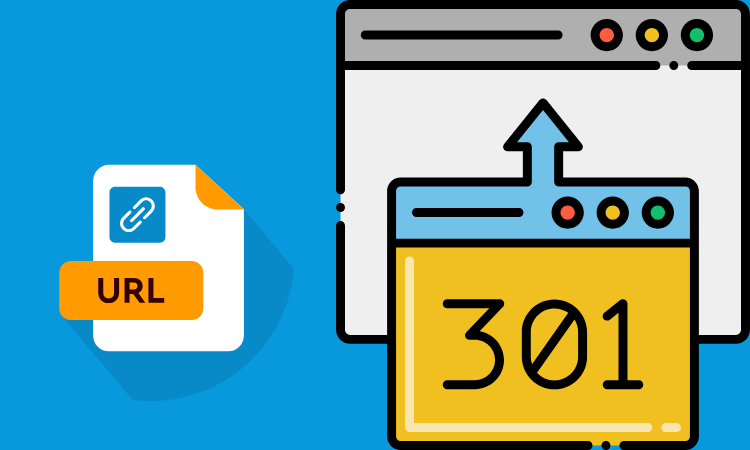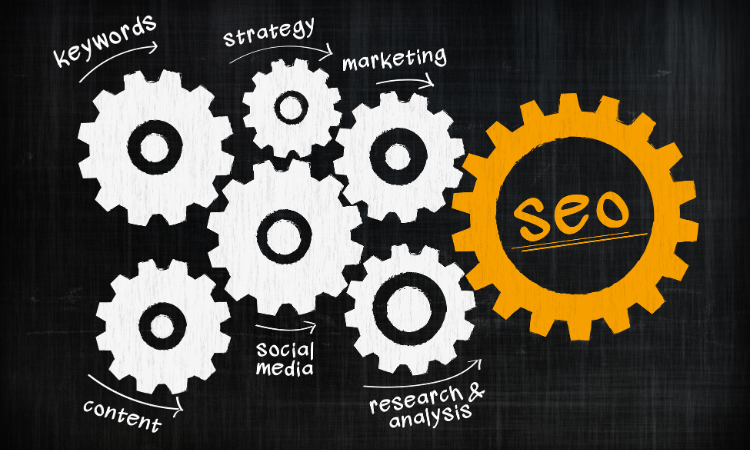A website redesign is an exciting opportunity to revamp your brand, improve functionality, and enhance overall user experience.
However, it’s important to remember that a redesign can significantly impact your SEO if not done thoughtfully.
SEO is crucial for attracting and retaining visitors, ensuring your site ranks well on search engines.
A poorly executed redesign can result in lost traffic, broken links, and decreased rankings. Maintaining SEO during the redesign process is essential to prevent these issues.
Smart Website Redesign Strategies to Maintain SEO
This article should serve as a comprehensive guide for anyone looking to redesign their website without sacrificing SEO performance.
Each section covers an essential aspect of SEO preservation during the redesign process.
Pre-Redesign SEO Audit
A Pre-Redesign SEO Audit is critical for understanding your current website’s SEO performance and ensuring that valuable SEO elements are preserved or improved during the redesign process.
This phase helps in identifying what’s working well and what needs improvement, providing a solid foundation for the new design.
Analyzing Current SEO Performance
To begin the pre-redesign SEO audit, it’s crucial to analyze your website’s current SEO performance.
Start by assessing your keyword rankings to understand which terms drive organic traffic and how they’re performing.
Review the organic traffic trends using tools like Google Analytics to identify top-performing pages and evaluate traffic patterns, including seasonal fluctuations.
This helps you pinpoint which content is most valuable. Additionally, examining your backlink profile with tools like Ahrefs or SEMrush is essential to understand the quality and quantity of backlinks pointing to your site.
Content Inventory and Mapping
A thorough content inventory and mapping process is essential during a website redesign.
Begin by auditing all existing content, including blog posts, product pages, and landing pages, to determine their performance in terms of traffic, engagement, and conversions.
Identify which pages are valuable and which might need to be updated, merged, or removed.
Once you’ve assessed your content, map it to the new site structure, ensuring that high-performing pages are preserved and optimized for the redesigned website.
This also offers an opportunity to create new, SEO-friendly content targeting relevant keywords to enhance your site’s overall visibility and user experience.

Check Existing Technical SEO Factors
Evaluating existing technical SEO factors is crucial to ensure the redesigned website retains or improves its search engine performance.
Begin by reviewing your website’s structure and URL hierarchy to ensure it remains simple, organized, and SEO-friendly.
Check for any crawl errors, broken links, or indexing issues using tools like Google Search Console.
Assess your site’s mobile-friendliness, as mobile-first indexing is essential for rankings.
Also, evaluate Core Web Vitals (LCP, FID, CLS) to ensure optimal page speed and user experience.
Lastly, verify that your site uses HTTPS for security, as it’s a ranking factor for search engines.
Set Clear SEO Goals for the Redesign
Setting clear SEO goals is crucial for a successful website redesign. Without clear objectives, the redesign could unintentionally harm your site’s SEO performance.
Begin by identifying your primary SEO goals, such as increasing organic traffic, improving keyword rankings, enhancing user engagement, or boosting conversions.
These goals will guide your redesign strategy, ensuring that every change made contributes to improving your site’s SEO health.
Defining SEO Objectives
Defining specific SEO objectives helps you create a roadmap for your redesign. Focus on measurable goals, such as improving site speed, optimizing for mobile users, enhancing content quality, or targeting new keywords.
It’s also essential to establish benchmarks based on current performance, like traffic metrics, bounce rates, or ranking positions.
For instance, you might set a goal to increase traffic to your homepage by 20% over the next year or to improve the average session duration on product pages.
Clear, quantifiable objectives make it easier to evaluate the success of your redesign.

Aligning Redesign Goals with SEO
Once your SEO objectives are defined, it’s essential to align them with your overall redesign goals.
If your design focuses on a better user experience, ensure that it also improves factors like page load time, navigation, and mobile responsiveness, which directly impact SEO.
Additionally, prioritize the redesign of high-traffic or high-converting pages to ensure they’re optimized for both users and search engines.
A balanced approach, where design goals and SEO goals align, will create a website that’s visually appealing, user-friendly, and optimized for search performance.
Design Process: Best Practices to Avoid SEO Pitfalls
During the redesign process, it’s essential to follow best practices to prevent SEO pitfalls that could harm your site’s search engine rankings.
A website redesign can unintentionally disrupt SEO elements, but by carefully planning and considering SEO from the start, you can avoid common mistakes and ensure a smooth transition.
Mobile-First Design
With mobile-first indexing now a standard for Google, prioritizing a mobile-first design is crucial.
The majority of users access websites on mobile devices, so your site should be fully optimized for mobile performance.
Ensure your mobile version is responsive, meaning it adapts seamlessly to different screen sizes and provides a smooth user experience.
A mobile-friendly site not only improves user engagement but also helps improve your rankings since Google considers mobile performance as a ranking factor.
Optimizing Site Speed
Site speed is another critical SEO factor that must be considered during the redesign. Websites that load slowly often drive visitors away and hurt search rankings.
During the redesign, focus on minimizing file sizes, optimizing images, using browser caching, and minimizing JavaScript or CSS that could slow down the site.
You can use tools like Google PageSpeed Insights to spot where your site needs improvement.
A faster website provides a better user experience and boosts SEO rankings.
URL Structure and Redirects
Maintaining a clean, SEO-friendly URL structure is essential during the redesign. Ensure that URLs are simple, descriptive, and consistent with your existing structure where possible.
If URLs need to change, be sure to implement 301 redirects to ensure that any existing page authority and backlinks are preserved.

Preserving Internal Linking
Internal linking plays a significant role in SEO, helping search engines crawl and index your site.
During the redesign, make sure that important pages are linked properly within the site’s structure.
If page URLs change, ensure that internal links are updated accordingly. This helps to maintain the flow of link equity across your site and prevents users from encountering broken links.
Content Strategy During Redesign
A strong content strategy during a website redesign ensures that valuable content is preserved, while new opportunities are created for SEO growth.
The content strategy should focus on maintaining existing content that drives traffic and conversions, updating outdated material, and creating fresh content aligned with user intent and SEO goals.
Maintaining Valuable Content
One of the most critical aspects of a content strategy during redesign is ensuring that valuable content remains intact.
This includes high-performing blog posts, product pages, and landing pages that generate significant organic traffic.
Carefully review your current content to identify the pages that contribute the most to your rankings.
These pages should be prioritized and maintained throughout the redesign process.
Avoid making significant changes to URLs or deleting content without proper consideration, as this could lead to the loss of valuable search engine rankings.
Using 301 Redirects for Moved Content
If content or pages need to be moved or renamed during the redesign, 301 redirects are essential.
A 301 redirect ensures that users and search engines are automatically redirected to the new URL, preserving SEO value such as backlinks and page authority.
Failing to implement 301 redirects for moved content can result in broken links, lost traffic, and decreased rankings.
Creating Fresh, SEO-Friendly Content
A redesign is a great opportunity to refresh your site’s content. Focus on creating fresh, SEO-friendly content that aligns with current user queries and search intent.
This could include blog posts, product descriptions, landing pages, or multimedia content.
Optimize this new content with relevant keywords, ensuring it addresses the needs of your target audience while maintaining a strong SEO foundation.
Technical SEO Considerations in Redesign
When redesigning a website, it’s essential to keep technical SEO in mind to ensure that search engines can crawl, index, and rank your site effectively.
The following technical considerations should be prioritized to maintain or improve SEO performance during the redesign.

Website Structure & Navigation
Website structure and navigation play a crucial role in both user experience and SEO. A clear, logical structure ensures that search engines can easily crawl and index your pages.
During the redesign, ensure that the site’s hierarchy is intuitive, with well-organized categories and subcategories.
Use a flat site structure where important pages are only a few clicks away from the homepage.
This makes it easier for search engines to discover key content and improves user navigation.
Maintaining consistent internal linking is also vital, helping both users and search engines find related content.
Schema Markup
Implementing schema markup during the redesign enhances your site’s visibility in search engine results by providing structured data.
This helps search engines understand your content and display rich snippets (like reviews, events, or FAQs) that improve click-through rates.
Make sure to add relevant schema types for products, articles, or local business information, depending on your website’s focus.
Proper use of schema markup can give your site a competitive edge in search results.

Site Speed Optimization
Site speed optimization is a critical aspect of technical SEO. Slow-loading pages not only harm user experience but also negatively impact your rankings.
During the redesign, optimize images, minimize code (CSS, JavaScript, HTML), and leverage browser caching to ensure faster load times.
Tools like Google PageSpeed Insights can help identify issues, and focusing on reducing server response time and optimizing page assets will ensure a faster, more efficient website.
Fixing Broken Links and Errors
Fixing broken links and errors is vital to maintaining both user experience and SEO performance.
Broken links can result in 404 errors, which frustrate users and hinder search engine crawlers from indexing your content properly.
During the redesign, run a thorough audit of your site to identify any broken links or 404 errors, and ensure they are either fixed with redirects or updated to the correct pages.
Additionally, review your site’s HTTP status codes to ensure there are no issues preventing proper indexing by search engines.
Post-Redesign SEO Checklist
After launching a redesigned website, it’s essential to carefully monitor and test your SEO performance to ensure no valuable rankings or traffic are lost.
Here’s a post-redesign SEO checklist to help guide the process.
Testing and Monitoring Changes
Once the new design is live, testing and monitoring changes is crucial to detect any issues early.
Regularly check for broken links, crawl errors, or missing elements using tools like Google Search Console and crawling tools like Screaming Frog.
Monitor site speed to ensure performance hasn’t dropped, and review user behavior metrics in Google Analytics, such as bounce rates, session durations, and conversion rates.
These insights can help you identify areas that may need improvement and ensure your redesign supports a better user experience.
Submit the New Sitemap to Google Search Console
Submitting your updated sitemap to Google Search Console is one of the first tasks post-redesign.
The sitemap informs search engines about the structure of your site, ensuring that all pages are crawled and indexed properly.
After redesigning, generate a new sitemap reflecting the updated URLs and submit it to Google Search Console.
This helps search engines quickly recognize and index your site’s new structure, improving the visibility of newly optimized content.
Reassess Backlinks
After a redesign, it’s important to reassess backlinks to ensure they continue pointing to the correct URLs.
If your site structure or URLs changed, update any backlinks that may be broken or leading to outdated pages.
Consider reaching out to the owners of external sites linking to you to request updates to their links.
Use tools like Ahrefs or SEMrush to review your backlink profile and ensure that your link equity is preserved.

Track Key Metrics
To gauge the success of your redesign, track key metrics closely. Key performance indicators (KPIs) such as organic traffic, keyword rankings, bounce rate, average session duration, and conversion rates should be monitored.
Set up custom reports in Google Analytics and Google Search Console to track these metrics over time, comparing them to pre-redesign data.
Regular monitoring allows you to catch any issues early, measure the effectiveness of the redesign, and adjust your strategy accordingly to ensure continued SEO success.
Handling Common SEO Issues After Redesign
After a website redesign, it’s common to encounter several SEO-related issues that can affect rankings and traffic.
Addressing these issues promptly is crucial to maintain SEO performance and prevent long-term damage. Here’s how to handle some common SEO challenges post-redesign.
Traffic Drop
A traffic drop after a website redesign is a common issue and may occur due to changes in URL structure, content, or site performance.
To address this, begin by checking if your site is being properly indexed using Google Search Console.
Ensure that any URLs that changed have proper 301 redirects in place to prevent losing traffic from old pages.
Also, monitor your site’s performance metrics, such as load times, since slower pages can cause higher bounce rates, negatively affecting SEO.
If the drop is related to missing or altered content, work on optimizing the affected pages and restoring important elements like meta descriptions, headings, and internal links.
Fixing Duplicate Content
Duplicate content can be a significant issue following a redesign, particularly if multiple pages share similar content or URLs have been altered.
Search engines may struggle to determine which page to rank, diluting SEO value. To fix this, use canonical tags to indicate the preferred version of a page, and make sure all similar content is properly marked to avoid duplication.
Audit your website using tools like Screaming Frog or Copyscape to identify duplicate pages or content, and make necessary adjustments to ensure search engines index the correct versions.
Addressing Redirect Issues
Redirect issues are one of the most common SEO problems after a redesign. If URLs change during the redesign, failing to implement proper 301 redirects can result in broken links and loss of page authority.
This can lead to a significant drop in organic traffic and rankings. Check that all old URLs are redirected correctly to their new counterparts using 301 redirects.
Use tools like Google Search Console and Screaming Frog to crawl your site and identify any redirect loops, 404 errors, or missing redirects.
Fix these issues promptly to preserve link equity and ensure a seamless user experience.

Continuous SEO Optimization After Redesign
After the redesign of your website, the work doesn’t stop with the launch.
Continuous SEO optimization is essential for maintaining and improving rankings, keeping the site aligned with SEO best practices, and adapting to ever-evolving search engine algorithms.
Here’s how to approach ongoing SEO maintenance and user experience (UX) enhancements.
Ongoing SEO Maintenance
Ongoing SEO maintenance involves consistently monitoring your website’s performance and making adjustments to keep it optimized.
Start by regularly reviewing your site’s keyword rankings, traffic patterns, and backlink profile.
Use tools like Google Analytics and Google Search Console to track key metrics such as page load speed, bounce rates, and organic search traffic.
This helps identify any areas that need improvement, such as underperforming pages or technical issues.
Additionally, update your content regularly to keep it relevant and aligned with current search intent.
As search algorithms continue to evolve, staying up-to-date with industry trends and implementing new SEO techniques ensures your website remains competitive in search rankings.
User Experience (UX) Enhancements
User experience (UX) enhancements are critical for both SEO and conversion optimization.
Google increasingly values user experience as a ranking factor, so it’s important to make improvements that foster engagement and reduce bounce rates.
Start by optimizing navigation to ensure users can easily find the information they need. Improve mobile responsiveness, as mobile-first indexing is now a primary ranking factor.
Regularly test your site’s speed, as faster websites tend to rank higher and provide better user experiences.
Also, consider adding interactive elements, improving site design for easier readability, and addressing any pain points that might frustrate users.

Brandout Can Help You Redesign Your Website While Retaining SEO Value
Redesigning your website can be tricky, especially when it comes to keeping your SEO performance. Brandout’s website redesign service ensures that your site’s SEO rankings are maintained while giving it a fresh look.
We focus on keeping your search engine visibility intact, helping you continue to attract visitors even after the redesign.
Conclusion
In conclusion, redesigning a website without losing SEO involves careful planning, strategic execution, and continuous monitoring.
Conducting a thorough pre-redesign audit, preserving high-performing content, and maintaining a strong site structure, you can protect your search rankings during the transition.
Implementing proper redirects, optimizing on-page elements, and monitoring performance post-launch are key to a smooth redesign.
A well-executed redesign not only enhances user experience but also strengthens your search visibility. With the right strategy, you can improve your website’s look and functionality without sacrificing SEO value.
Frequently asked questions:
Does redesigning a website affect SEO?
Yes, redesigning a website can affect SEO if not handled carefully. Changes to site structure, content, and URLs can impact search rankings. Proper planning and SEO preservation strategies help minimize these risks.
Will I lose Google ranking if I redesign or redevelop my website?
You may experience a temporary drop in rankings after a redesign, especially if URLs, content, or structure change. Implementing proper redirects and maintaining on-page SEO elements helps prevent long-term ranking loss.
Which technique should be avoided in SEO?
Avoid black-hat techniques like keyword stuffing, cloaking, and buying backlinks. These methods can lead to penalties and harm your site’s ranking. Focus on creating valuable content and following search engine guidelines.
Does site speed affect Google ranking?
Yes, site speed is a key ranking factor. Slow-loading pages lead to higher bounce rates and lower search visibility. Optimizing images, reducing server response time, and using caching can improve speed and rankings.




